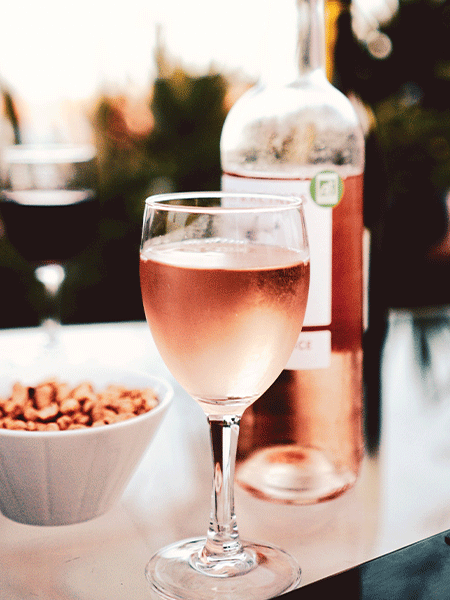
An insurrectionist walks into a bar. His wife is there to meet him, drinking a glass of 16° zinfandel. “Beer?” asks the bearded man behind the tap. “Nah.” “Shot of whisky?” “Uh-uh. Too hot.” “Glass of rosé?” “Bring it on.”
Unlikely, perhaps, but maybe this summer…
Twenty years ago, proud men and wine thugs left rosé to the stenographers who recorded the proceedings of their embezzlement trials. In California, many of those stenographers were drinking white zin. Even five years ago, when I met the owner of a wine company at Zuni Café in San Francisco, he laughed as I ordered a bottle of rosé Champagne for us to share. “Two guys, drinking pink wine in San Francisco?” he asked. It’s my favorite thing to drink, I said, and we went on to finish the bottle.
The run of celebrities putting their names on bottles isn’t enough to change the perception of rosé—it had become politicized. But the quality and depth of character in recent releases just might. And our editors have some less obvious reasons for devoting attention to the category: Our wine politics are, intentionally, hyper-democratic. As tasters, we don’t consider one region or one class of wine to be inherently superior. Nor do we take price into account when we recommend and rate wine. We might confuse some readers when we give a rosé 98 points, or a riesling 100 points, as we do in this issue. What could be so great about a rosé? Or a riesling?
In our world, all that matters is how the wine tastes. And while there are certainly a lot of rosés that taste like perfumed dishwater, the community of great rosés is growing, as are their eager drinkers.
It took until the Great Recession for the politics of wine to change: for a large enough group of wine drinkers to say, “Sure, I’ll try that.” Meanwhile, the wine thugs, circling the wagons around their favorite critic, began to lose energy and interest as they aged out and sold off their undrunk collections. Then it took another ten years for light and delicate red wines and rosés to fully flower. And we are there now, at a moment when drinking a rosé is not only apolitical, but delicious.
If you are open to reconsider a few preconceptions, Patricio Tapia might convince you to try one of the new breed of Chilean pinot noirs. And Stephanie Johnson might lead you to the kind of Prosecco you’d be offered at the family home of an artisan producer—rather than the kind you might find stacked by the case at your favorite wine shop.
And, if you are willing to set aside politics for a moment, on either side of the Middle-East divide, Jamal Rayyis has some thoughts on the Palestinian wines arriving on our shores. Tara Q. Thomas reviews those wines in our first tasting of Palestinian wines, from a place where political borders and armed conflicts have divided people from their land. Young winemakers are defying that separation and their wines offer a new taste of what can grow from there.
Joshua Greene is the editor and publisher of Wine & Spirits magazine.
This story appears in the print issue of August 2021.
Like what you read? Subscribe today.
















